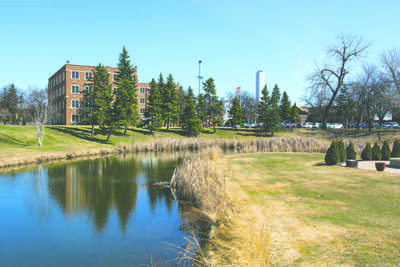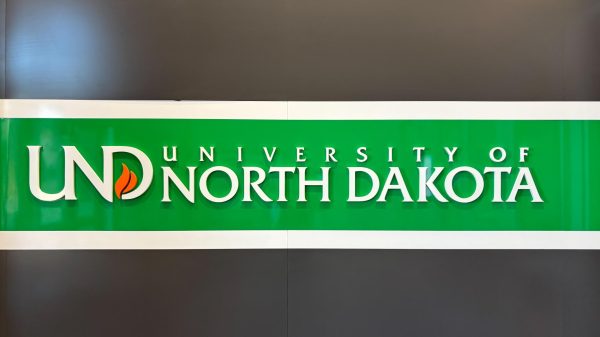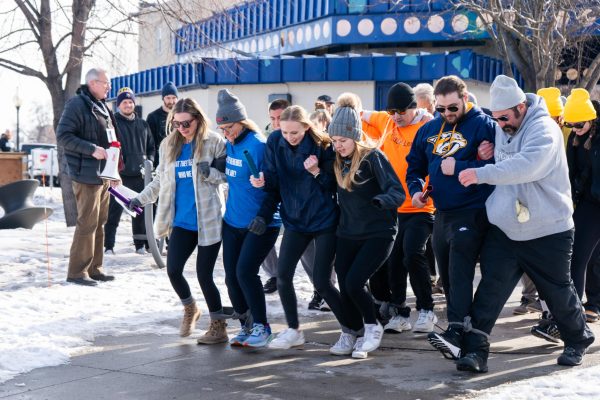Installing islands in the coulee
Floating islands will be installed in the English Coulee this summer to help boost the eco-system of the area. Photo by Nick Nelson/The Dakota Student.
UND’s Environmental Restoration Club raised more than $9,000 in order to install two BioHaven floating islands next school year in the English Coulee to help naturally filter out the chemical runoff that is polluting the water.
The gardens will mimic a wetland habitat for wildlife such as birds, turtles and otters while the flowers will provide food for local pollinators. The president of the restoration club, Rachel Thorstenson, hopes these gardens will change the way students and other Grand Forks community members see and use the coulee.
With more than $9,300 raised, members of the Environmental Restoration Club have been planning and designing to install two 90 square foot islands into the English Coulee.
Costing roughly $50 per square foot, these islands will provide much needed habitat for wetland dependent animal species, beautify campus and species, beautify campus and help aid the pungent odor that’s caused by an excess build-up of bacteria.
“We also hope that through these islands we can educate the community about the importance of the natural ecosystems found in the Grand Forks area, along with the many steps that community members can take on a daily basis in order to help protect and enhance the natural environment found here in Grand Forks,” Thorstenson said.
Constructed of durable, non-toxic post-consumer plastics, BioHaven islands float on top of the water, providing habitat for birds and animals. But underneath the surface, a dynamic process takes place.
Microbes are responsible for breaking down nutrients and other water-borne pollutants, but to be effective, they need a surface to stick to. The floating island matrix, with its dense fibers and porous texture, is the perfect surface area for growing large amounts of microbes (in the form of biofilm) in a short time.
Nutrients circulating in the water come into contact with these biofilms and are consumed by them, while a smaller fraction of the surface area below the islands being used by plant roots.
Suspended solids slough off into the benthic zone below the island. Organic solids stick to the biofilms and become the base of the freshwater food web.
Because BioHaven floating islands are able to withstand fluctuations in water levels, they are very suitable for the treatment of runoff and drainage. Islands can assist in managing the water-level changes in urban storm waters and agricultural runoff.
The sticky biofilm which covers the roots acts as a mechanical filter for fine particulates, while the island itself provides shade to cool the water, and blocks the light that might otherwise encourage weeds growth.
Overhanging banks act as wave-breakers and allow passage of fish underneath. In this setting, the effective nutrient cycle contributes to insect and fish population growth, which have long been a hallmark of a healthy and productive ecosystem.
On Earth Day, April 22, the Environmental Restoration Club will have a booth outside of the Wilkerson Commons where students can learn about the species that depend on the English Coulee, invasive species in and around the coulee, the installation of the islands after finals week, and Litter RoUNDup while signing up for prizes that will be given out afterwards.
“We were able to get $6,000 in Student Organization Funding Agency funding for holding the Earth Day event,” Thorstenson said. Those who attend can enter to win prizes that will be given out after the event.











